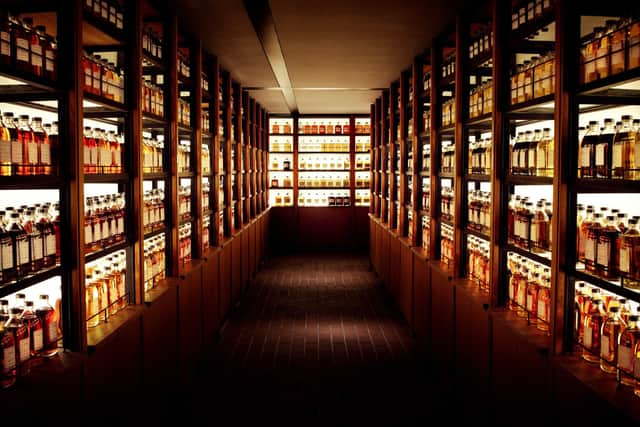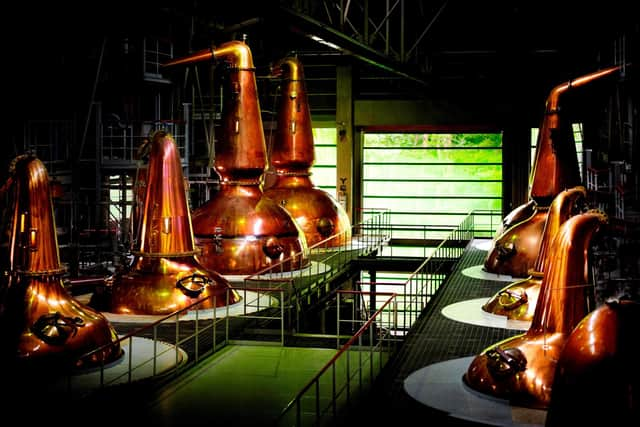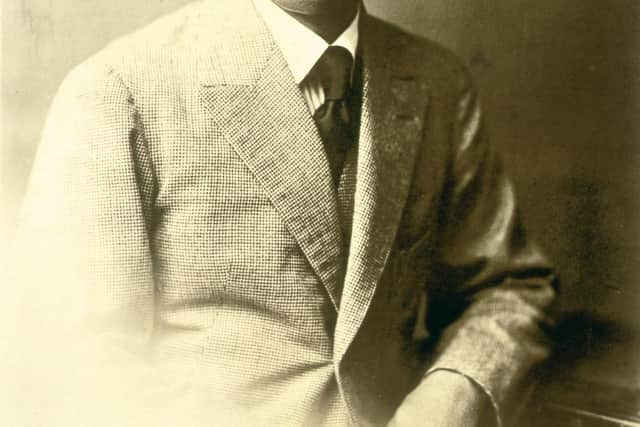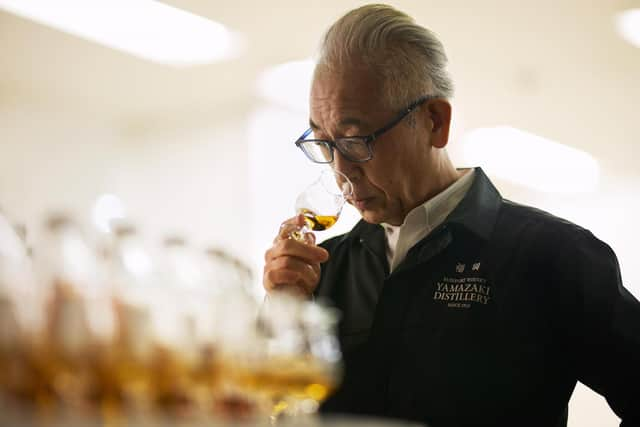How Scotland has inspired Japanese whisky - 100 years of the Suntory drinks empire
Longmorn Distillery in Speyside is one of those blink-and-you’ll-miss-it ones, set off the road to Elgin.
The Speyside area is well known for its number of distilleries, many hidden behind hills or on estates, which years ago was key to avoiding the excise men. While there are many drams to try in the region, only Longmorn played a key role in the development of whisky over 5,000 miles away.
Advertisement
Hide AdAdvertisement
Hide AdIt was here, Bo’ness and Hazelburn in Campbeltown that Masataka Taketsuru, often referred to as the father of Japanese whisky, undertook apprenticeships in the early 1900s to uncover the art of Scottish whisky-making, along with studying organic chemistry at the University of Glasgow.


Mr Taketsuru was sent to Scotland by Settsu Shuzo, the leading producer of western liquor in Kansai, Japan. Mr Shuzo had spotted a gap in the market for Japanese whisky. During his time in Scotland, Mr Taketsuru fell in love with Rita Cowan, the daughter of the family in which he was lodging, and they married in 1920, returning to Japan that year.
Although Mr Masataka had been sent to learn how to make whisky for Settsu Shuzo, it wasn’t until he teamed up with Shinjiro Torii, founder of Torii Shoten (now Suntory) that this dream was realised. Mr Torii began his business by importing Spanish wine, but these didn’t appeal to customers. He was also selling his own ersatz “whiskies”, but soon realised there was demand for authentic whisky distilled in Japan.
Step forward Mr Taketsuru, whom he worked with to build Japan’s first whisky distillery, Yamazaki, which was founded in the namesake town in 1923. Mr Taketsuru took inspiration from his time in Scotland and used this to create a spirit with similar qualities to that of Scotch whisky.
As Japanese whisky developed, distillers started to specifically aim to emulate the lighter, floral notes of Speyside whisky. High quality Scotch was studied, with Golden Promise barley, the same used by Macallan, imported by Suntory for their whisky. In the early 1930s Masataka Taketsuru left Yamazaki to set up on his own distillery. He founded the Dai-Nippon Kaju KK company, later called Nikka Whisky Distilling.


The distilling methods are very much like making Scotch whisky, and visitors may recognise the eye-catching pagodas seen all over Scoltand’s whisky regions at these Japanese distilleries. While Japanese whisky doesn’t have specific regions like Scotland, Ji-whisky, 地 ウ ィ キ ー, which means locally produced, small batch Japanese whisky, is usually sold in the vicinity of the distillery in Japan, meaning locals are able to explore whisky with a link to their home through the ji-whisky movement.
A reader may think that’s the end of the story, but Scotland’s connection with Japan continues to this day. Wood plays a part in some new Scotch whiskies that have been recently launched. Mizunara wood is the native Japanese oak, notoriously hard to work with and scarce in the world of whisky.
However, it is becoming increasingly sought-after by Japanese distilleries, which are looking to create a uniquely Japanese whisky. Mizunara wood is, however, no longer limited to Japan, but has also begun to be explored by distilleries in Scotland.
Advertisement
Hide AdAdvertisement
Hide AdMizunara wood has been used as a finish in the Glenfiddich Grand Yozakura, which was released earlier this year. The connection to Japan in Scotland can also be seen through the owners of some Scottish distilleries. In 1986, Tomatin distillery in the Highlands was purchased by Japanese company Takara Shuzo, who used the highland malt in blending.


The company also owned Shirakawa, a lost distillery in Japan that was thought to have used all its liquid in blending. However, this year Tomatin released Shirakawa 1958, the oldest Japanese single malt ever, highlighting the unexpected results of Japanese-Scottish whisky collaborations. Toamtin is not the only Japanese owned distillery in Scotland. Ben Nevis has been owned by Nikka Whisky since 1989 and Suntory purchased Morrison-Bowmore Distillers – Bowmore, Glen Garioch, Auchentoshan – in 1994.
This year marks the 100th anniversary of Suntory, and, much like its Scottish cousins, the popularity of its Yamazaki and Masataka’s Nikka whiskies is on the rise, with prices increasing in recent years.
In 2015, the average hammer price of a bottle of Yamazaki at Whisky Auctioneer was £359. By last year, that had more than tripled to £1,131. Joe Wilson, head curator and spirits specialist at Whisky Auctioneer, said this is down to quality and consistency, saying: “It is a true testament to the quality of its product that the first and oldest single malt whisky distillery in Japan is not only still operating, but as one of the most sought-after names in the industry.
"Such reverence is born of the consistent mastery of its craft that one expects from a distillery that even after 100 years, still has generational family members of its founder placed not in the boardroom, but in blending and distilling roles. Japanese whisky is inexorably linked to that of Scotch, both in its origins and the continued methods of its production.


"As the demand for collectible Scotch whisky began to boom at the turn of this century, it is no surprise that the familiar style single malts from Japan became the next logical collector’s frontier. Yamazaki is a transcendent force that has become not only the figurehead of this, but one of the pre-eminent names in all of single malt whisky as the increasingly global category that it is.”
As Suntory is set to release some historic whiskies to mark their anniversary, it’ll be fascinating to fans to see how Scotland’s ongoing connection to Japan, via whisky, continues to influence innovation in our national drink.
Comments
Want to join the conversation? Please or to comment on this article.